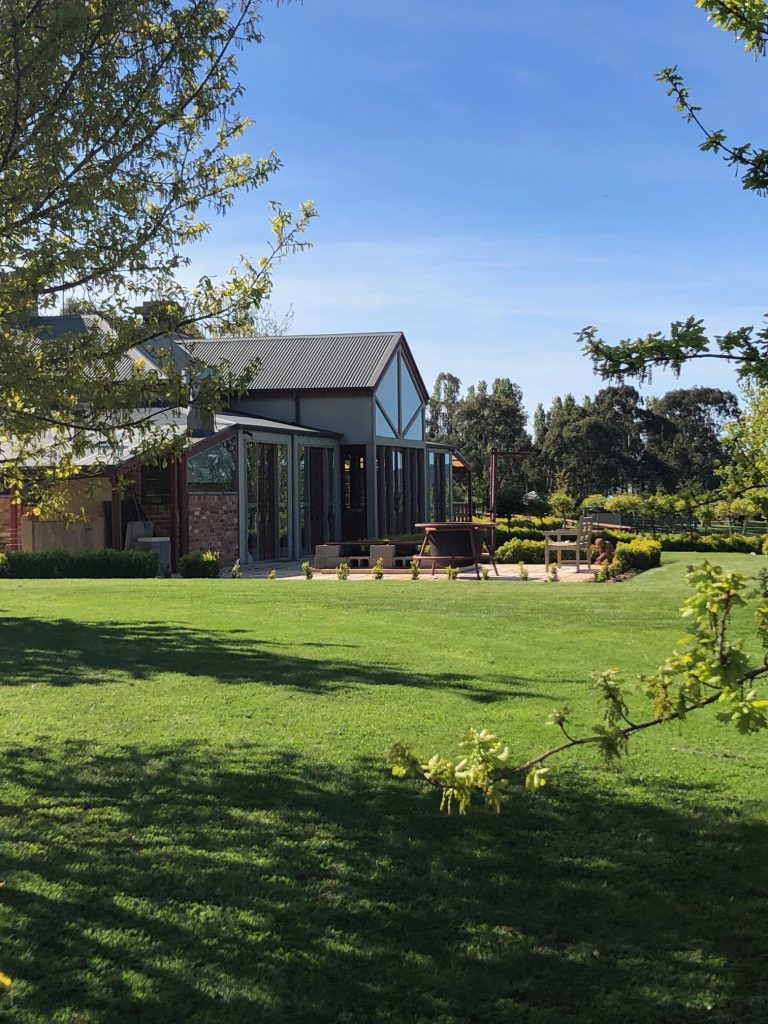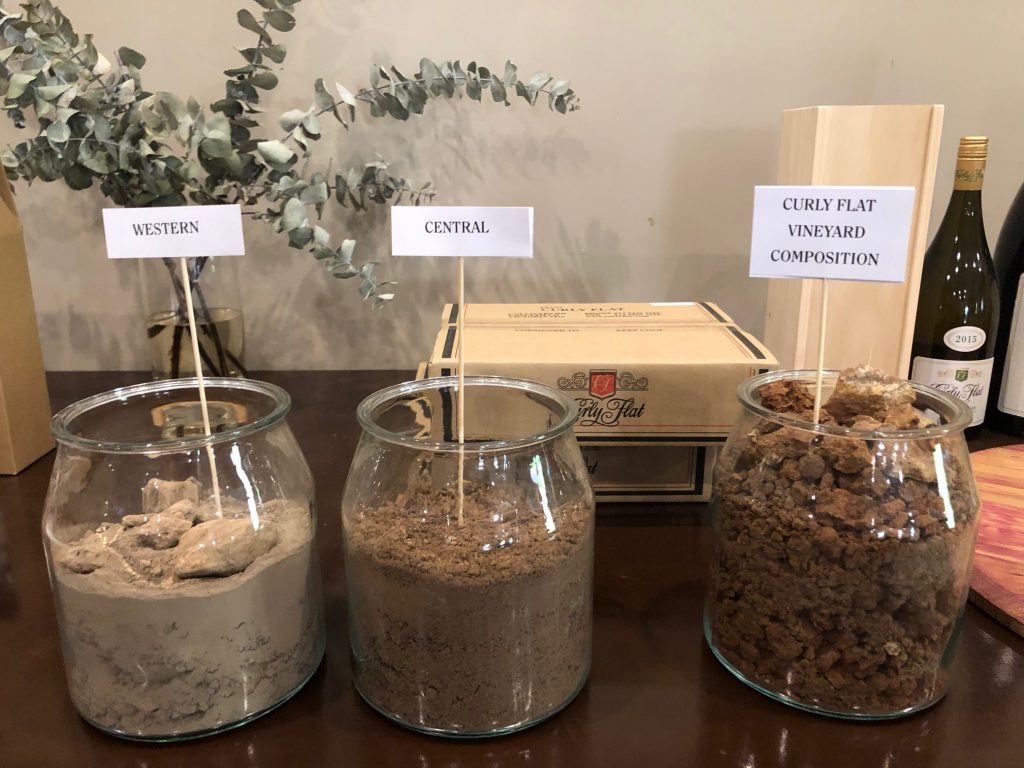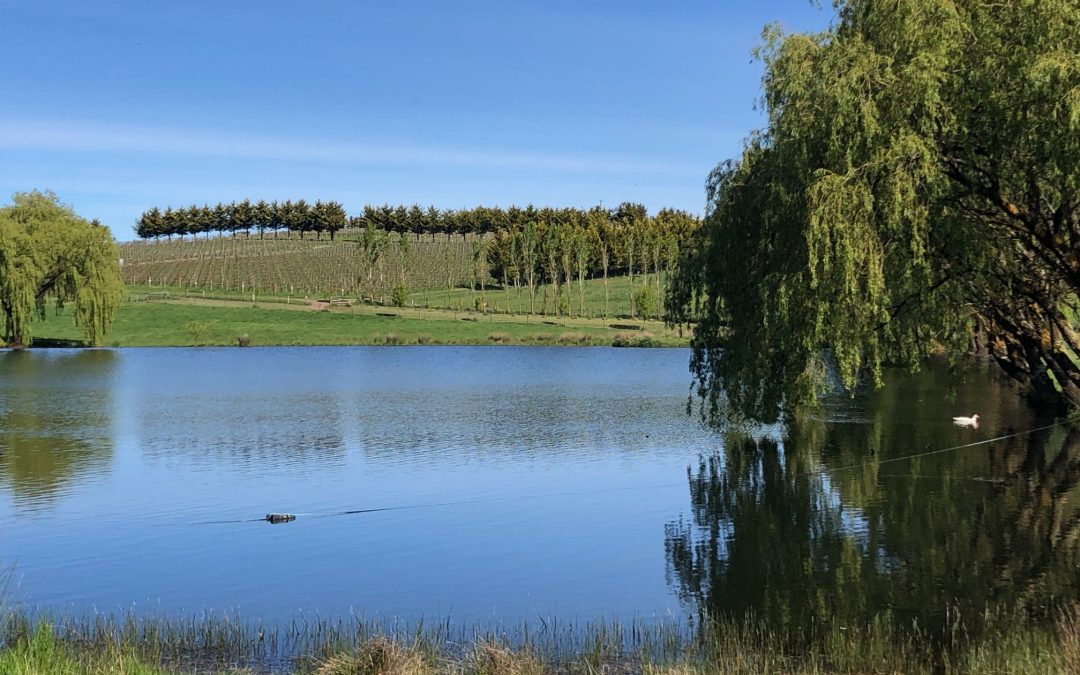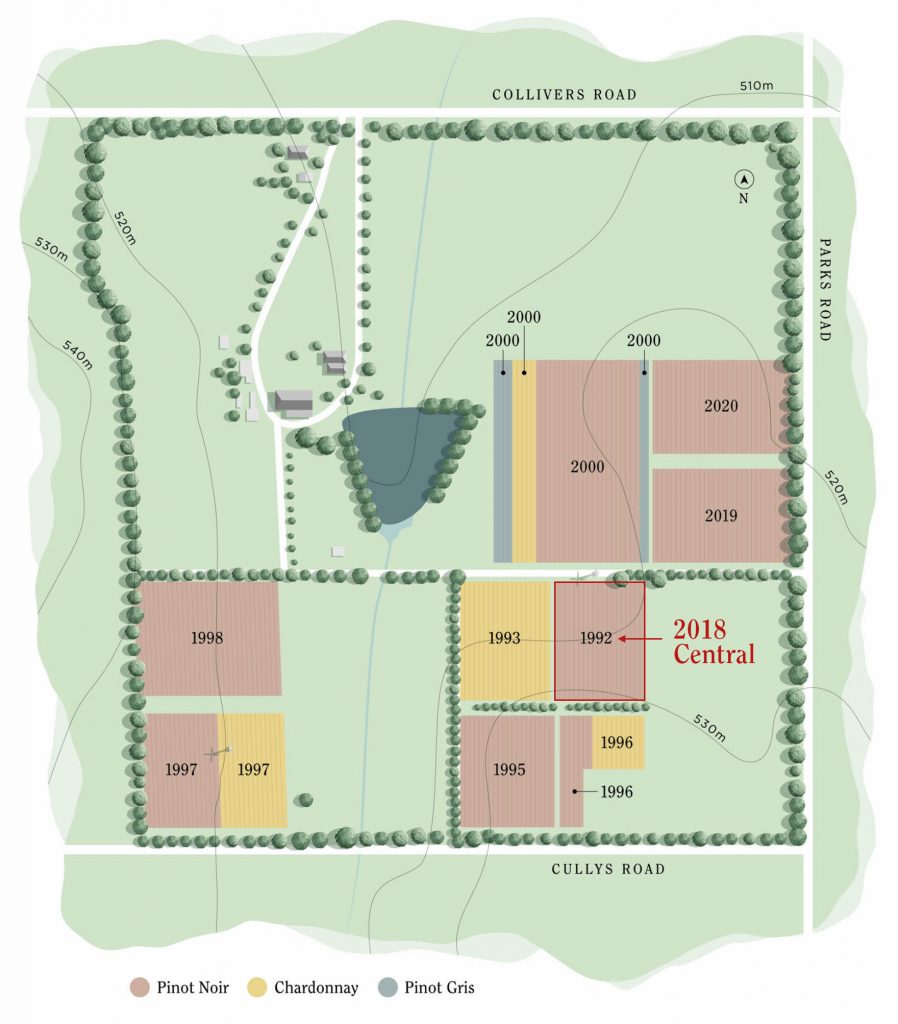Curly Flat was established in 1989 by Phillip Moraghan and Jenifer Kolkka. Together they built up an enviable estate up until 2017 when winemaker Philip left for pastures new and Jeni became the sole owner. She wisely employed winemaker Matt Harrop, who had built a solid career with Shadowfax in Geelong. I’d image it is a tricky proposition taking over an estate that Jancis Robinson MW is widely reported to have said “produces some of the finest Australian Pinot Noir I have encountered.”

Since the early days of Curly Flat I’ve been an admirer of their Pinot and Chardonnay and often visited Phillip when the chance arose.
Now, living so close, I often drive over to pester Jeni, Matt and his valuable assistant Ben Kimmorley. Ben is an important link to the old and new Curly Flat being Phillip’s assistant for many years and therefore has an intimate knowledge about past vintages and the vineyard.
Thinking about Matt’s challenge I’ve come to realise that the old adage is so true that a winemaker is only a custodian of the land and the vines and it is their responsibility to make wine that show a sense of place.
So with this in mind we recorded a casual chat with the winemaking team to discuss the vineyard and regional characters whilst enjoying a 2019 estate Pinot.
When you get into marginal climates like the Macedon Ranges vintage variation comes into play and no two vintages are the same. This is clearly demonstrated by looking at the 2019 and 2020 Pinot. The 2019 displays what is more like a typical Curly Flat with clearly driven darker fruits and a firm slightly tannic profile producing an age worthy pinot. The 2020, not released until May 2022, was a lower yielding, cooler vintage with a poor flowering/fruit set and even some frost. Tasting this wine there was sweet red primary fruits, some spice and some promise of it developing that lovely cured meat note. Due to the cooler vintage it has higher acid levels than the 2019. Crafting a high-quality pinot given difficult vintage conditions is where the experienced winemaker comes in. Not wanting to hide the vintage conditions but rather add attractive ‘seasoning’ to the season! So this wine had more new oak than warmer vintages and 100% whole berries. Both wines are appealing in their own way.
Whilst the majority of people will like one or the other there is a joy in experiencing vintage variation and without it you simply have an industrialized product.
The geology of the Macedon and Cobaw Ranges is complex, and requires an article in its own right. But basically, it is centered around volcanic activity from the Devonian period. Mount Macedon (1,100m) is an old Volcano. There have been many folds, uplifts and subsequent erosion to expose different soils. So you get plenty of granite, basalt and trachyte. But also sedimentary sandstone and shale.
Curly Flat produce their estate Pinot Noir as well as a Central Pinot and a Western Pinot from two different blocks in the vineyard. All three wines are priced the same. The separate bottlings allow an insight into the material they get to blend into the estate wine. In the interview Ben talks about the Ordovician soils which are sandstone in nature and around 430 million years old. These are on the cool east facing Western block. Whilst the Central block is on deep red volcanic basalt and facing north. There is a difference in clonal material as well. (just to add another layer of complexity). Central is MV6 and Western is Dijon clones 114 and 115. Here is some background on the clones from an old interview I did with Phillip “MV6 is the backbone of Australian plantings and it provides muscular wine; whilst 114 is more aromatic, some would say feminine. 115 has tight compact bunches, similar to MV6, and provides depth to a blend”

Western, Central and composite soils at Curly Flat
To receive notification of new articles sign up to my newsletter at the bottom of the home page.
On tasting the 2019 wines (prior to their release) I summarised Western as elegant, fruit forward with redcurrants, maraschino cherry and old oak cedar notes. A hint reductive. On the palate it was supple, textured with a long finish. Whilst the Central was black fruit, brambly muscular wine with powerful tannins (for a Pinot). Savoury driven palate and equally long finish.
The estate has invested in research not only in soil types but how airflow traverse the land. They have removed or trimmed trees that might trap frost as a natural way of protecting the vines. I can tell from talking to Matt and Ben that investigating their terroir will continue for many years.
Curly Flat tasting notes are here. 2019 wines are currently for sale on their website.
Want to know more about wine? – join me in class online.

